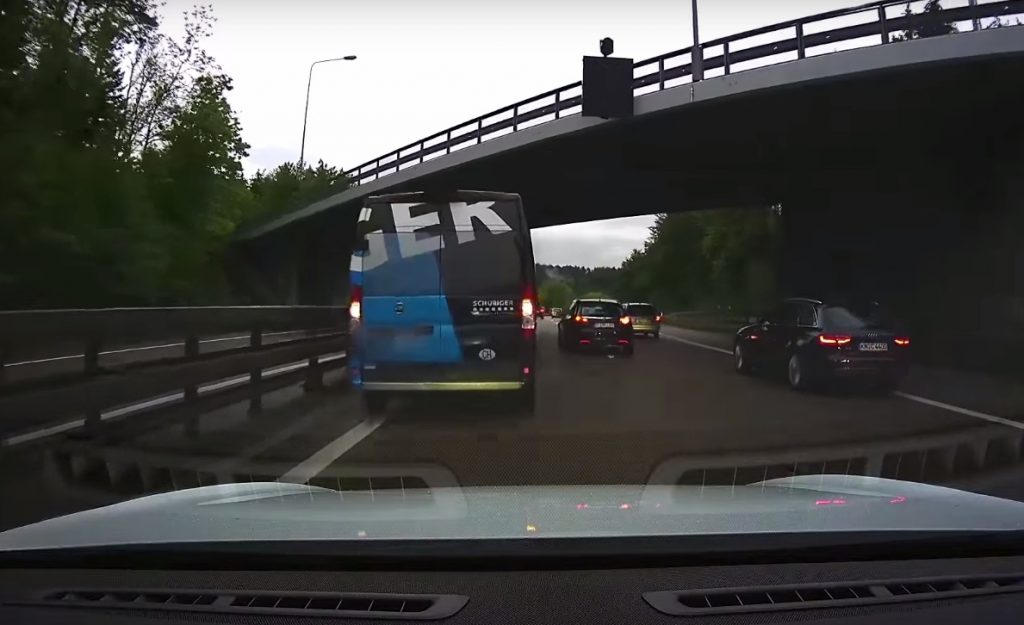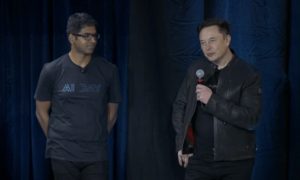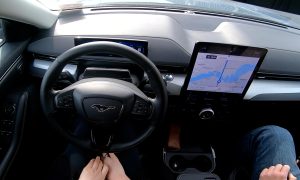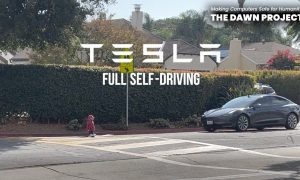News
Do autonomous cars make us worse drivers?
Autonomous cars are coming. So is the first fatality associated with them. Statistically, that milestone should occur in the next 18 months. What will happen then?
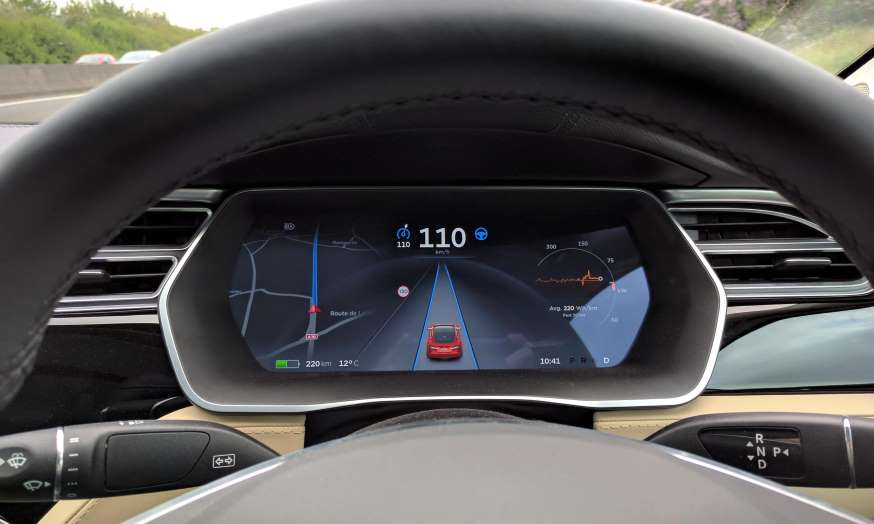
On May 31, 2009, an Airbus 330 on its way from Rio de Janiero to Paris plunged from an altitude of 35,000 feet into the Atlantic, killing all 228 people on board. Just prior to the crash, the airplane was operating in autopilot mode. A reconstruction of the disaster revealed input from several sensors had been compromised by ice that caused them to give false readings. Updated sensors that were less susceptible to ice accumulation were waiting to be installed after the plane arrived in Paris.
Because of the false readings the autopilot system disengaged returning control to the pilots however the senior pilot was sleeping at the time. The two junior pilots were not as highly trained in high altitude flight as they might have been, partly because the use of machines to control aircraft under those conditions was the norm.
Faced with the unexpected, the pilots behaved poorly. At one point they are heard to say on the cockpit recorder, “We completely lost control of the airplane, and we don’t understand anything! We tried everything!” While they tried to rouse the sleeping senior pilot, the nose of the aircraft climbed until a stall was induced. Stall is the point at which the wings become barn doors instead of airfoils. The Airbus 330 dropped from the sky like a rock.
In his excellent story about the crash published on Vanity Fair, William Langewiesche offered this conclusion: “Automation has made it more and more unlikely that ordinary airline pilots will ever have to face a raw crisis in flight—but also more and more unlikely that they will be able to cope with such a crisis if one arises.”
The Tesla community has seen similar instances lately. The driver in Salt Lake City who accidentally activated Summon, causing his car to drive into the back of a truck. The woman on a freeway in California who rear ended a car that suddenly slowed in front of her. The man in Europe who crashed into the back of a van that had stalled in the high speed lane of a highway. He at least had the courage to admit his error. “Yes, I could have reacted sooner, but when the car slows down correctly 1,000 times, you trust it to do it the next time to. My bad.”
After each of these incidents, the tendency has been for many to defend the machine and blame the human. But in a recent article for The Guardian, author Martin Robbins says, “Combine an autopilot with a good driver, and you get an autopilot with, if not a bad driver, at least not such a good one.” He says that statistically, the time when a car operating in autonomous mode causes a fatality is rapidly approaching.
On average, a person is killed in a traffic accident in the United States once every 100 million miles. Elon Musk says Tesla’s Autopilot is half as likely to be involved in a collision as a human driver. That would suggest that somewhere around the 200 million mile mark someone will die as a result of an automobile driven by a machine.
Tesla has already passed the 100 million mile mark for cars driving in Autopilot mode and continues to log 2.6 million miles driven per day. Statistically speaking, the time when a self driving car kills somebody is rapidly approaching. And since most autonomous cars on the road are Teslas, the odds are excellent it will be a Tesla that is involved in that first fatality.
What will happen then? Robbins goes back in history to look for an answer to that question. In 1896, Bridgit Driscoll became the first person in England to be killed by a motor car. The reaction among the public and the press was a fatalistic acceptance that progress will have a price. Within a few years, the speed limit in England was raised from 8 mph — which is was when Ms. Driscoll was killed — to 20 mph. This despite the fact that thousands of road deaths were being recorded on English roads by then.
Regulators around the world are racing to catch up with the explosion of new autonomous driving technology. But Robbins concludes, “By the time they do, it’s likely that the technology will already be an accepted fact of life, its safety taken for granted by consumers, its failures written off as the fault of its error-prone human masters.”
The point is that injuries and fatalities will continue to occur as cars come to rely more and more on machines for routine driving chores. But in that transition period between now and the time when Level 4 autonomy becomes the norm — the day when cars come from the factory with no way for humans to control them directly — we need to accept that complacency and an inflated belief in the power of machines to protect us from harm may actually render us less competent behind the wheel.
We will need to remain vigilant, if for no other reason than telling a jury “It’s not my fault! The machine failed!” is not going to insulate us from the legal requirement to operate our private automobiles in a safe and prudent manner.
News
Tesla UK sales see 14% year-over-year rebound in June: SMMT data
The SMMT stated that Tesla sales grew 14% year-over-year to 7,719 units in June 2025.

Tesla’s sales in the United Kingdom rose in June, climbing 14% year-over-year to 7,719 units, as per data from the Society of Motor Manufacturers and Traders (SMMT). The spike in the company’s sales coincided with the first deliveries of the updated Model Y last month.
Model Y deliveries support Tesla’s UK recovery
Tesla’s June performance marked one of its strongest months in the UK so far this year, with new Model Y deliveries contributing significantly to the company’s momentum.
While the SMMT listed Tesla with 7,719 deliveries in June, independent data from New AutoMotive suggested that the electric vehicle maker registered 7,891 units during the month instead. However, year-to-date figures for Tesla remain 2% down compared to 2024, as per a report from Reuters.
While Tesla made a strong showing in June, rivals are also growing. Chinese automaker BYD saw UK sales rise nearly fourfold to 2,498 units, while Ford posted the highest EV growth among major automakers, with a more than fourfold increase in the first half of 2025.
Overall, the UK’s battery electric vehicle (BEV) demand surged 39% to to 47,354 units last month, helping push total new car sales in the UK to 191,316 units, up 6.7% from the same period in 2024.
EV adoption accelerates, but concerns linger
June marked the best month for UK car sales since 2019, though the SMMT cautioned that growth in the electric vehicle sector remains heavily dependent on discounting and support programs. Still, one in four new vehicle buyers in June chose a battery electric vehicle.
SMMT Chief Executive Mike Hawes noted that despite strong BEV demand, sales levels are still below regulatory targets. “Further growth in sales, and the sector will rely on increased and improved charging facilities to boost mainstream electric vehicle adoption,” Hawes stated.
Also taking effect this week was a new US-UK trade deal, which lowers tariffs on UK car exports to the United States from 27.5% to 10%. The agreement could benefit UK-based EV producers aiming to expand across the country.
News
Tesla Model 3 ranks as the safest new car in Europe for 2025, per Euro NCAP tests
Despite being on the market longer than many of its rivals, the Tesla Model 3 continues to set the bar for vehicle safety.

The Tesla Model 3 has been named the safest new car on sale in 2025, according to the latest results from the Euro NCAP. Among 20 newly tested vehicles, the Model 3 emerged at the top of the list, scoring an impressive 359 out of 400 possible points across all major safety categories.
Tesla Model 3’s safety systems
Despite being on the market longer than many of its rivals, the Tesla Model 3 continues to set the bar for vehicle safety. Under Euro NCAP’s stricter 2025 testing protocols, the electric sedan earned 90% for adult occupant protection, 93% for child occupant protection, 89% for pedestrian protection, and 87% for its Safety Assist systems.
The updated Model 3 received particular praise for its advanced driver assistance features, including Tesla’s autonomous emergency braking (AEB) system, which performed well across various test scenarios. Its Intelligent Speed Assistance and child presence detection system were cited as noteworthy features as well, as per a WhatCar report.
Other notable safety features include the Model 3’s pedestrian-friendly pop-up hood and robust crash protection for both front and side collisions. Euro NCAP also highlighted the Model 3’s ability to detect vulnerable road users during complex maneuvers, such as turning across oncoming traffic.
Euro NCAP’s Autopilot caution
While the Model 3’s safety scores were impressive across the board, Euro NCAP did raise concerns about driver expectations of Tesla’s Autopilot system. The organization warned that some owners may overestimate the system’s capabilities, potentially leading to misuse or inattention behind the wheel. Even so, the Model 3 remained the highest-scoring vehicle tested under Euro NCAP’s updated criteria this year.
The Euro NCAP’s concerns are also quite interesting because Tesla’s Full Self-Driving (FSD) Supervised, which is arguably the company’s most robust safety suite, is not allowed for public rollout in Europe yet. FSD Supervised would allow the Model 3 to navigate inner city streets with only minimal human supervision.
Other top scorers included the Volkswagen ID.7, Polestar 3, and Geely EX5, but none matched the Model 3’s total score or consistency across categories. A total of 14 out of 20 newly tested cars earned five stars, while several models, including the Kia EV3, MG ZS, and Renault 5, fell short of the top rating.
Elon Musk
Why Tesla’s Q3 could be one of its biggest quarters in history
Tesla could stand to benefit from the removal of the $7,500 EV tax credit at the end of Q3.

Tesla has gotten off to a slow start in 2025, as the first half of the year has not been one to remember from a delivery perspective.
However, Q3 could end up being one of the best the company has had in history, with the United States potentially being a major contributor to what might reverse a slow start to the year.
Earlier today, the United States’ House of Representatives officially passed President Trump’s “Big Beautiful Bill,” after it made its way through the Senate earlier this week. The bill will head to President Trump, as he looks to sign it before his July 4 deadline.
The Bill will effectively bring closure to the $7,500 EV tax credit, which will end on September 30, 2025. This means, over the next three months in the United States, those who are looking to buy an EV will have their last chance to take advantage of the credit. EVs will then be, for most people, $7,500 more expensive, in essence.
The tax credit is available to any single filer who makes under $150,000 per year, $225,000 a year to a head of household, and $300,000 to couples filing jointly.
Ending the tax credit was expected with the Trump administration, as his policies have leaned significantly toward reliance on fossil fuels, ending what he calls an “EV mandate.” He has used this phrase several times in disagreements with Tesla CEO Elon Musk.
Nevertheless, those who have been on the fence about buying a Tesla, or any EV, for that matter, will have some decisions to make in the next three months. While all companies will stand to benefit from this time crunch, Tesla could be the true winner because of its sheer volume.
If things are done correctly, meaning if Tesla can also offer incentives like 0% APR, special pricing on leasing or financing, or other advantages (like free Red, White, and Blue for a short period of time in celebration of Independence Day), it could see some real volume in sales this quarter.
You can now buy a Tesla in Red, White, and Blue for free until July 14 https://t.co/iAwhaRFOH0
— TESLARATI (@Teslarati) July 3, 2025
Tesla is just a shade under 721,000 deliveries for the year, so it’s on pace for roughly 1.4 million for 2025. This would be a decrease from the 1.8 million cars it delivered in each of the last two years. Traditionally, the second half of the year has produced Tesla’s strongest quarters. Its top three quarters in terms of deliveries are Q4 2024 with 495,570 vehicles, Q4 2023 with 484,507 vehicles, and Q3 2024 with 462,890 vehicles.
-

 Elon Musk4 days ago
Elon Musk4 days agoTesla investors will be shocked by Jim Cramer’s latest assessment
-

 News1 week ago
News1 week agoTesla Robotaxi’s biggest challenge seems to be this one thing
-

 Elon Musk2 weeks ago
Elon Musk2 weeks agoFirst Look at Tesla’s Robotaxi App: features, design, and more
-

 News2 weeks ago
News2 weeks agoSpaceX and Elon Musk share insights on Starship Ship 36’s RUD
-

 News2 weeks ago
News2 weeks agoWatch Tesla’s first driverless public Robotaxi rides in Texas
-

 News1 week ago
News1 week agoWatch the first true Tesla Robotaxi intervention by safety monitor
-

 News2 weeks ago
News2 weeks agoTesla has started rolling out initial round of Robotaxi invites
-

 Elon Musk2 weeks ago
Elon Musk2 weeks agoTesla to launch in India in July with vehicles already arriving: report

